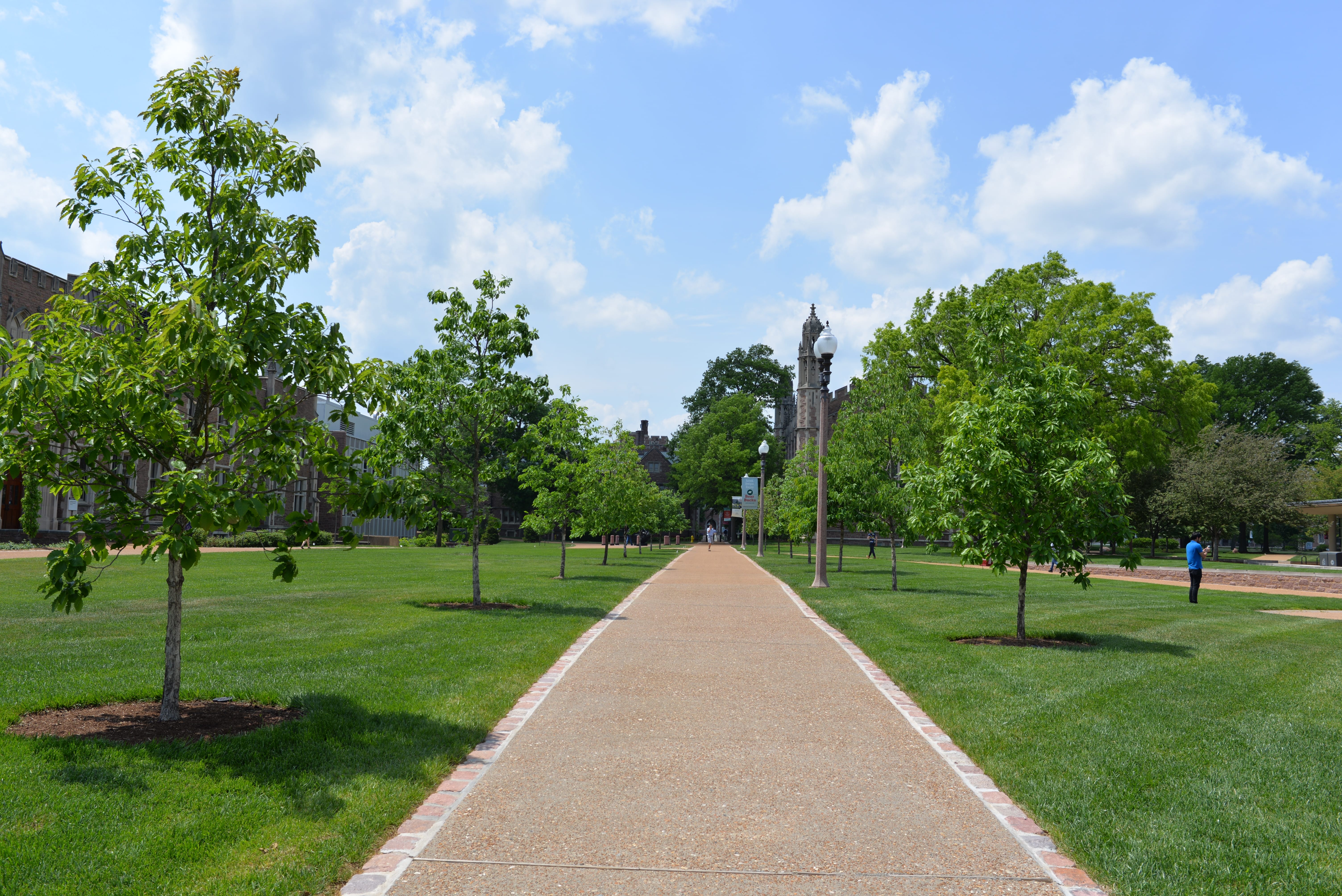Chinkapin Oak
Arbor Walk #26, Treekeeper ID #1345

Native to the Midwest, the Chinkapin Oak can be easily recognized due to its small, toothed leaves. Unlike most oaks, the Chinkapin has unusually flaky and fissured bark. Although this tree grows best in deep, well drained soil, it may also grow on dry limestone bluffs and hillsides. Also referred to as the Yellow Oak, early settlers used this tree for fencing and fuel for steamships.
This tree lined walkway is part of the historic Landscape of Washington University. The Chinkapin Oak was part of a strategic allée restoration planting in 2016, which replaced the dying Pin Oak (Quercus palutris) allée.
The Chinkapin Oak is a member of the subgenus of white oaks. These oaks are distinguishable from other oaks from their smooth lobe tips (no awns), their hairless leaf undersides, and their lighter, flakier bark. The acorns of white oaks are also less tannic, meaning that they require less processing to become safe and palatable.
| Common Name | Chinkapin Oak, Chinquapin Oak, Yellow Oak |
|---|---|
| Latin Name | Quercus muehlenbergii |
| Indigenous Name(s) | |
| Cultivar/Variety | |
| Commercial Name |